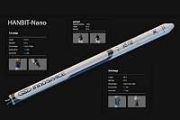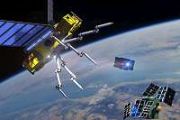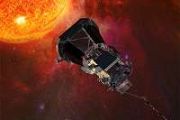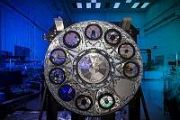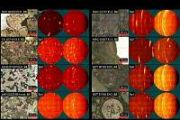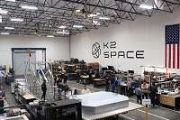
Copernical Team
Northrop Grumman's Space Tracking and Surveillance System completes mission
China's space station to support large-scale scientific research
 China plans to conduct a number of frontier scientific experiments on its Tiangong space station, with the two laboratory modules, Wentian and Mengtian, scheduled to be launched this year, according to the Technology and Engineering Center for Space Utilization under the Chinese Academy of Sciences.
The experiments include raising fish, growing vegetables, setting up the most precise clock
China plans to conduct a number of frontier scientific experiments on its Tiangong space station, with the two laboratory modules, Wentian and Mengtian, scheduled to be launched this year, according to the Technology and Engineering Center for Space Utilization under the Chinese Academy of Sciences.
The experiments include raising fish, growing vegetables, setting up the most precise clock Russia's energy clout also comes from being a key nuclear supplier
 As Western nations look for ways to reduce their reliance on Russian oil and gas, another aspect of the Ukraine crisis has received less attention: Most of the 32 countries that use nuclear power rely on Russia for some part of their nuclear fuel supply chain.
Nuclear power is a critical part of many national electricity grids. European countries especially rely on nuclear power, including
As Western nations look for ways to reduce their reliance on Russian oil and gas, another aspect of the Ukraine crisis has received less attention: Most of the 32 countries that use nuclear power rely on Russia for some part of their nuclear fuel supply chain.
Nuclear power is a critical part of many national electricity grids. European countries especially rely on nuclear power, including Government of Canada invests in small modular reactor technology
 Canada is a leader in nuclear energy and nuclear safety and has one of the world's most promising domestic markets for the safe and responsible development of small modular reactor (SMR) technology. SMRs have the potential to provide strong economic benefits to the Canadian economy and support Canada's efforts to achieve net-zero greenhouse gas emissions by 2050.
The Honourable Francois-Ph
Canada is a leader in nuclear energy and nuclear safety and has one of the world's most promising domestic markets for the safe and responsible development of small modular reactor (SMR) technology. SMRs have the potential to provide strong economic benefits to the Canadian economy and support Canada's efforts to achieve net-zero greenhouse gas emissions by 2050.
The Honourable Francois-Ph NASA spots giant debris cloud created by clashing celestial bodies
 Major smashups between rocky bodies shaped our solar system. Observations of a similar crash give clues about how frequent these events are around other stars. Most of the rocky planets and satellites in our solar system, including Earth and the Moon, were formed or shaped by massive collisions early in the solar system's history. By smashing together, rocky bodies can accumulate more material,
Major smashups between rocky bodies shaped our solar system. Observations of a similar crash give clues about how frequent these events are around other stars. Most of the rocky planets and satellites in our solar system, including Earth and the Moon, were formed or shaped by massive collisions early in the solar system's history. By smashing together, rocky bodies can accumulate more material, Black swifts descended rapidly during lunar eclipse
 An international research team led by Lund University in Sweden has managed to study the flight behaviour of the mysterious black swift. They found, among other things, that the black swift rises to extreme heights during a full moon, seemingly catching insects in the moonlight. And, during a lunar eclipse, the birds simultaneously lost altitude. The results are published in Current Biology.
An international research team led by Lund University in Sweden has managed to study the flight behaviour of the mysterious black swift. They found, among other things, that the black swift rises to extreme heights during a full moon, seemingly catching insects in the moonlight. And, during a lunar eclipse, the birds simultaneously lost altitude. The results are published in Current Biology. New insight into the possible origins of life
 Researchers at the University of Tokyo have for the first time been able to create an RNA molecule that replicates, diversifies and develops complexity, following Darwinian evolution. This has provided the first empirical evidence that simple biological molecules can lead to the emergence of complex lifelike systems.
Life has many big questions, not least being where did we come from? Mayb
Researchers at the University of Tokyo have for the first time been able to create an RNA molecule that replicates, diversifies and develops complexity, following Darwinian evolution. This has provided the first empirical evidence that simple biological molecules can lead to the emergence of complex lifelike systems.
Life has many big questions, not least being where did we come from? Mayb Report to Congress on Hypersonic Weapons
 The United States has actively pursued the development of hypersonic weapons-maneuvering weapons that fly at speeds of at least Mach 5-as a part of its conventional prompt global strike program since the early 2000s. In recent years, the United States has focused such efforts on developing hypersonic glide vehicles, which are launched from a rocket before gliding to a target, and hypersonic crui
The United States has actively pursued the development of hypersonic weapons-maneuvering weapons that fly at speeds of at least Mach 5-as a part of its conventional prompt global strike program since the early 2000s. In recent years, the United States has focused such efforts on developing hypersonic glide vehicles, which are launched from a rocket before gliding to a target, and hypersonic crui A large solar storm could knock out the power grid and the internet
 On Sept. 1 and 2, 1859, telegraph systems around the world failed catastrophically. The operators of the telegraphs reported receiving electrical shocks, telegraph paper catching fire, and being able to operate equipment with batteries disconnected. During the evenings, the aurora borealis, more commonly known as the northern lights, could be seen as far south as Colombia. Typically, these light
On Sept. 1 and 2, 1859, telegraph systems around the world failed catastrophically. The operators of the telegraphs reported receiving electrical shocks, telegraph paper catching fire, and being able to operate equipment with batteries disconnected. During the evenings, the aurora borealis, more commonly known as the northern lights, could be seen as far south as Colombia. Typically, these light SpaceX puts another 53 Starlinks in orbit with midnight launch
 Elon Musk's SpaceX launched 53 Starlink satellites from Florida early Saturday morning after a short delay. The company was scheduled to launch the spacecraft on a Falcon 9 rocket at 11:23 p.m. EDT from Complex 40 at Cape Canaveral Space Force Station. Liftoff time was instantaneous, meaning any problems could prompt a delay of about 24 hours to Saturday night.
Elon Musk's SpaceX launched 53 Starlink satellites from Florida early Saturday morning after a short delay. The company was scheduled to launch the spacecraft on a Falcon 9 rocket at 11:23 p.m. EDT from Complex 40 at Cape Canaveral Space Force Station. Liftoff time was instantaneous, meaning any problems could prompt a delay of about 24 hours to Saturday night. 





